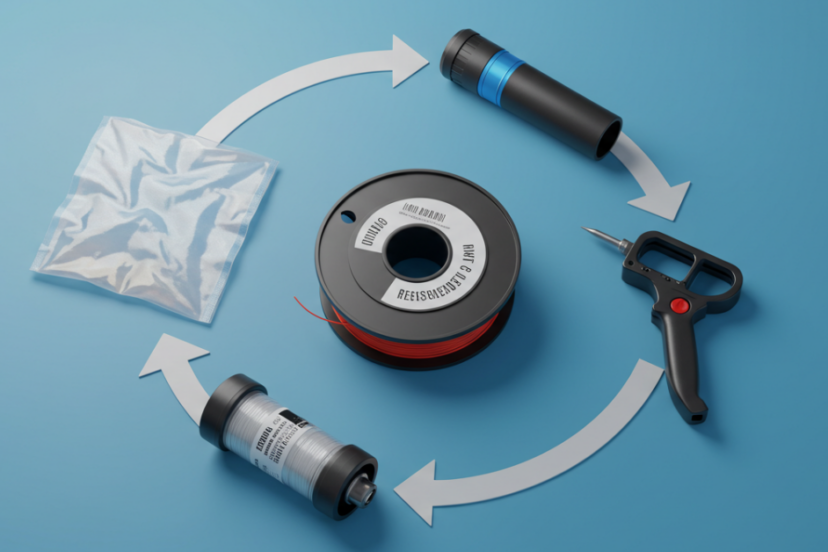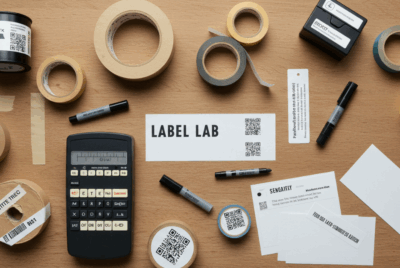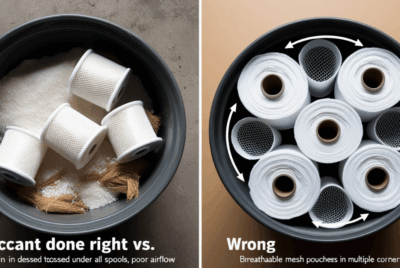Can You Reuse Vacuum-Sealed Bags for Storing Filament?
Vacuum-sealed bags are an effective way to protect your 3D filament from moisture and environmental factors, but one common question is whether these bags can be reused after they’ve been opened. The answer depends on the condition of the bags and how they were used. Let’s explore whether and how you can reuse vacuum-sealed bags for filament storage.
1. Reusing Vacuum-Sealed Bags: General Considerations
- How It Works: Vacuum-sealed bags can be reused if they’re in good condition and still maintain an airtight seal after being opened. However, the effectiveness of the bag can deteriorate over time with repeated use, especially if the bag has been exposed to moisture, heat, or physical stress.
- Why It Matters for Filament Storage: If you intend to reuse the vacuum-sealed bag, you’ll want to ensure that the bag still seals properly and remains airtight to prevent moisture from entering and compromising your filament.
- How to Do It: Inspect the vacuum bag for any signs of wear and tear, punctures, or compromised seals. If the bag is still in good condition and the seal is intact, you can reuse it by resealing it with a vacuum sealer.
2. Inspecting the Bag for Damage
- What to Look For: Before deciding to reuse a vacuum-sealed bag, make sure that it is still free of punctures, tears, or any other physical damage. If the bag has been damaged during the initial sealing or opening process, it may not form a proper seal on future use.
- Why It Matters for Filament Storage: If there are holes or tears, the bag will no longer be able to maintain an airtight seal, allowing moisture and air to enter, which could damage the filament.
- How to Do It: Check the entire surface of the bag carefully, especially around the seal area where the vacuum sealer applied heat. If the seal area is intact and the bag remains unpunctured, it can still be used.
- Solution: If there is significant damage, it’s best to replace the bag with a new one to ensure effective moisture protection.
3. Ensuring a Tight Seal
- How It Works: To reuse a vacuum-sealed bag, you need to ensure that it still seals properly. If the original seal is compromised after opening, the bag will not be able to create an airtight environment for filament storage.
- Why It Matters for Filament Storage: A proper seal is essential for keeping moisture and contaminants away from your filament. If the bag doesn’t seal tightly, moisture can re-enter, defeating the purpose of vacuum-sealing.
- How to Do It: If the vacuum bag has an imperfect seal, you can try resealing it using your vacuum sealer. If the seal function isn’t effective after multiple uses, it’s best to switch to a new bag to ensure a reliable seal.
- Solution: Regularly test the seal by gently pressing the bag to ensure no air can re-enter. If air leaks into the bag, the seal is compromised and the bag should be replaced.
4. Cleaning and Reusing Vacuum-Sealed Bags
- What to Look For: Vacuum-sealed bags can be cleaned and reused, provided they aren’t heavily damaged or contaminated. Cleaning the bags helps remove any dust or residue from the first use and ensures they are ready for sealing again.
- Why It Matters for Filament Storage: Clean bags are important because any leftover contaminants or debris could affect the filament inside, especially if the bag is reused multiple times.
- How to Do It: To clean the bags, wipe them down with a damp cloth or use mild soap and water to clean the inside and outside. Make sure the bags are completely dry before reusing them to prevent mold or mildew from forming.
- Benefit: Reusing clean bags reduces waste and allows for cost-effective storage without sacrificing the safety of the filament.
5. How Often Can You Reuse Vacuum-Sealed Bags?
- What to Expect: Vacuum-sealed bags are generally designed for single-use, but you can reuse them multiple times if they are well-maintained and still effective. However, as the bags age, their ability to form a proper seal may decrease.
- Why It Matters for Filament Storage: The more a bag is reused, the more wear and tear it will experience. Eventually, the material will degrade, especially if it has been exposed to moisture, heat, or UV light, making it less effective at keeping filament protected.
- How to Do It: After each use, inspect the bag for signs of deterioration, such as weakened seal lines or plastic cracking. Limit the number of uses for each bag to ensure your filament remains properly protected.
- Benefit: Reusing the bags a few times before replacing them ensures you get the most out of each bag while maintaining the safety of your filament.
6. Vacuum-Sealed Bags vs. Other Long-Term Storage Methods
- How It Works: While vacuum-sealing is effective for moisture protection, other storage methods like dry boxes or airtight containers are often more convenient for storing filament long-term. They don’t require resealing and allow for easier access.
- Why It Matters for Filament Storage: Vacuum-sealing provides strong moisture protection, but it is not as convenient as dry boxes or airtight containers, especially if you need to access filament frequently or store multiple spools.
- How to Do It: If you’re storing filament long-term and prefer easy access, consider using dry boxes with built-in humidity control. For long-term storage where access is less frequent, vacuum-sealing is still a great option.
- Benefit: Combining vacuum-sealing with dry boxes can offer the best protection and convenience for your filament storage needs.
Summary of Key Points About Reusing Vacuum-Sealed Bags:
- Inspect the Bag for Damage: Ensure the bag is free from tears, punctures, or weak seals before reusing it.
- Check the Seal: Test the bag to ensure it creates a tight, airtight seal. If it’s compromised, consider replacing it.
- Clean the Bags: Wipe or wash the bags to remove any dust or residue, making sure they are dry before reusing.
- Use Bags Sparingly: Limit the number of reuses to prevent the bag from losing its effectiveness.
- Consider Alternative Storage Options: For frequent use or easy access, consider using dry boxes or airtight containers alongside vacuum-sealing.
Conclusion:
Yes, vacuum-sealed bags can be reused for storing filament, provided they remain in good condition. By ensuring that the bags are free from damage, maintaining their ability to seal tightly, and cleaning them before reuse, you can get multiple uses out of each bag. However, over time, the bags may lose their effectiveness, so it’s important to inspect them regularly and replace them when necessary. For optimal filament protection, especially for long-term storage, vacuum-sealing remains an effective and cost-efficient method, though it’s important to weigh convenience and accessibility when considering alternative storage options like dry boxes.




